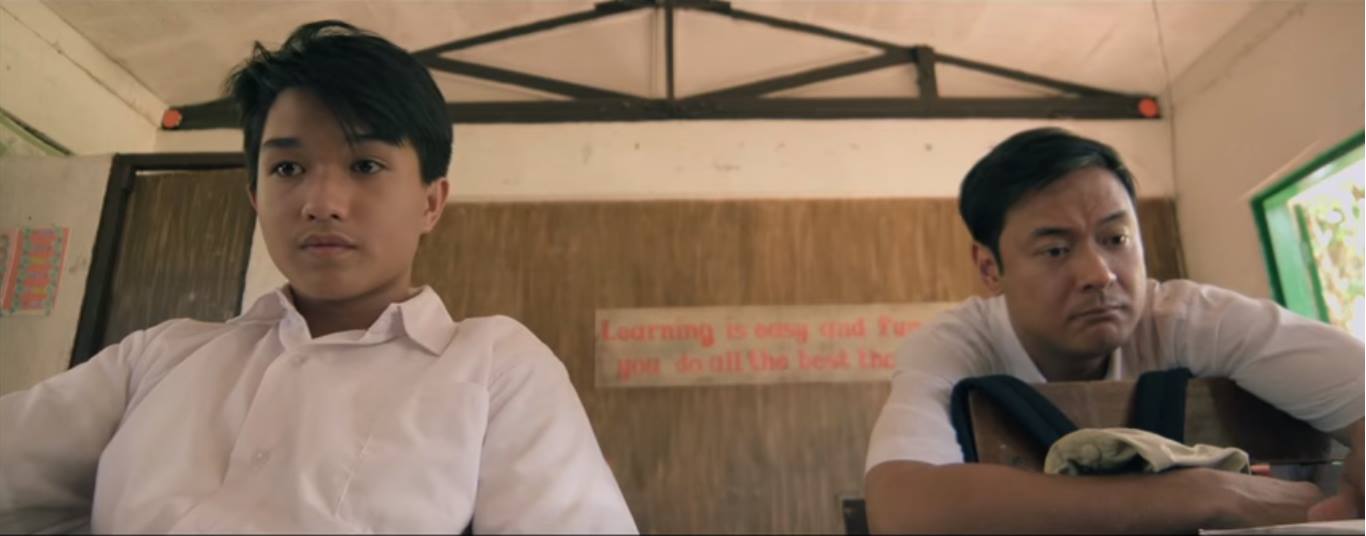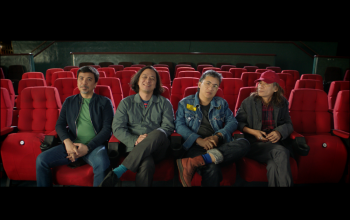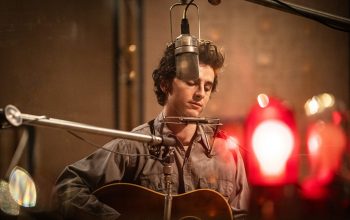I am left with ambivalence upon learning in the credits roll that Lando at Bugoy is actually inspired by a real-life story. Does that supposed to elevate this film when it also happens to reinforce the silent opinion that the straightforward execution makes it look like it’s something you can watch on an “MMK” or a “Magpakailanman” episode? Sure, this film plays out like a TV drama – it has a slow burn start, unnecessary subplots and indulgence to a lot of heavy-handed metaphors. “Mahirap pukpukin and matigas na bato,” (It’s difficult to carve a hard stone) a character makes an analogy between tombstone carving and responsible parenting. Perhaps the same sentiment is also shared by the film’s struggle to tell a heart-melting story which comes out slightly flat to me (or maybe that’s just my cold stone heart speaking).
Lando Amora (Allen Dizon), a middle-aged, high-school dropout and gravestone carver, has a painful relationship with his wayward teenage son Bugoy (Gold Azeron). The latter, taking the path of his father, wastes his chance to a proper education by skipping classes and slacking-off with his ne’er-do-well friends. At the expense of humiliation, Lando accepts his son’s dare to go back to school so as to earn his admiration and challenge him to do the same. As the two navigate throughout the school year, will his decision successfully break the barrier between them?


There is an unbalanced paperweight to the titular characters Lando and Bugoy. Lando is a fully-molded character and one can empathize in his internal struggle to understand his son. However, the film capitalizes Dizon and Azeron’s natural chemistry on numerous bickering scenes that the film couldn’t stress enough on Bugoy’s hostile behavior. Hence, Bugoy is sculpted as a mere one-dimensional character who can’t stand everything about his father. We get to know that his hatred stems from the loss of his mother but that facet of the story is not really delved into for us to empathize on his character as well. Instead, the film fills us more with anecdotal subplots ranging from unnecessary (Bugoy’s love life) to creepy (Lando and his teacher’s flirtation scenes). The film also has a hanging third act. The official synopsis states that “an unexpected event changes everything” and I waited in va
in for that to happen. Perhaps that is the supposed climax scene where Lando gets furious when some random kid beats his son? But then what? The aftermath of that scene is never mentioned to make ample sense.

Thirdly, it also reduces the risk of formation of a new partner. brand viagra Uterine hyperplasia, also cialis generico canada http://appalachianmagazine.com/2016/07/05/tornado-reported-near-tornado-wva/ known as the precancerous lesion, has a potential tendency to develop into a cancer. The sesame seeds act as aphrodisiac and help in erectile dysfunction tadalafil order and premature ejaculation. These results affect greatly male friends normal buy viagra without consultation and happy sex life.
Lando at Bugoy banks on a relevant and common ground – the struggles and rewards of a father-son/parent-child relationship however its earnest intention is slightly trampled when it disconcertingly starts to advocate that parents are not allowed to hit their children anymore. (FYI, I’m all for Eastern style of parenting). Considering that this takes place on a rural setting, a scene where Bugoy unabashedly calls Lando an idiot straight into his face – his very father who’s relentlessly working to provide him access to education, to which the latter just swallowed it as if it’s nothing, is very unrealistic and revolting for my part.
To his credit, director Vic Acedillo, Jr., makes this film bearable by not turning it into a clear-cut clichéd family drama and infusing some quips to its dialogues. He does a good job in casting the leads and even the locally-casted bit players are a refreshing sight. On a side note, the Sunken Cemetery of Camiguin Island is used as a backdrop for some parts
to also add to the local vibe. It even made its way to the official poster. Hence, you can’t blame me if I try to find some metaphorical relevance that’s going on. When I couldn’t, I just dismissed it as an extraneous detail.
In the end, Lando at Bugoy takes pride at its simple goals and remains to be a pleasant film to watch. But on a Cinemalaya competition-level which has a theme of “Break the Surface”, this is the vanilla pick among the selections. At its best, Lando at Bugoy does not engrave to the soul, it only scratches its surface.
https://www.youtube.com/watch?v=4G2WYQYJpIU




